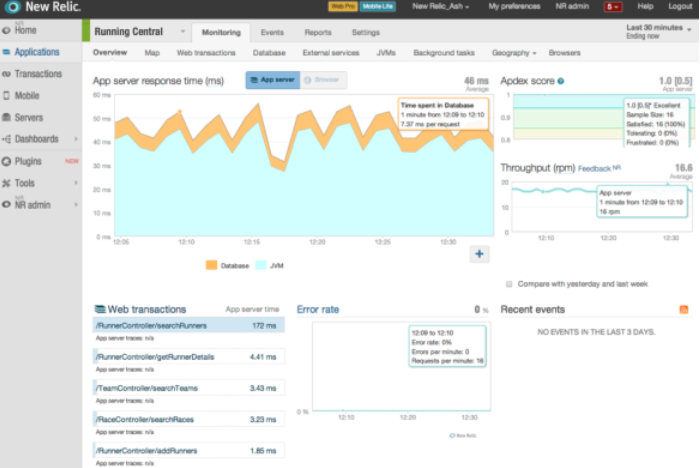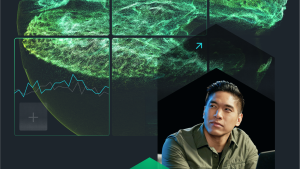The Cloud Foundry team has been busy making their Platform-as-a-Service “just work” and recently published an in-depth blog post about Monitoring Cloud Foundry Applications with New Relic. Like we do, Cloud Foundry believes that application deployment, monitoring, and management should be quick and simple to set up and use.
Cloud Foundry’s deployment model is based around the concept of a buildpack, originally conceived and contributed as open source by Heroku, which contains the set of runtimes and frameworks required by the application being deployed. You can think of a buildpack as a stack of software that your application can take advantage of and depend on.
The Java buildpack for Cloud Foundry includes the New Relic agent for Java applications automatically, so it only takes a few commands in your terminal or clicks of your mouse to provision New Relic and then bind it to your Java applications. After a quick application you’ll start seeing the application performance data in New Relic.

Cloud Foundry is organized so that your production, testing, and development environments remain separate. You can use New Relic in all three environments to gain unique insight into your application’s performance and behavior. So, whether you are just starting to build your application or it is running in production, try binding New Relic to it to see how your application is performing.

Check out Cloud Foundry’s blog post for more details on using New Relic with the Java buildpack. Or check out the short video demo below created by our friends at Cloud Foundry, which shows just how quick and easy it is to deploy to Cloud Foundry and use New Relic. Go ahead and try it for yourself! Want to learn how to get cloud faster with AWS? Our infographic on cloud observability can help.
To find how New Relic helps customers monitor their platforms for success, also read story with ZenHub.
Die in diesem Blog geäußerten Ansichten sind die des Autors und spiegeln nicht unbedingt die Ansichten von New Relic wider. Alle vom Autor angebotenen Lösungen sind umgebungsspezifisch und nicht Teil der kommerziellen Lösungen oder des Supports von New Relic. Bitte besuchen Sie uns exklusiv im Explorers Hub (discuss.newrelic.com) für Fragen und Unterstützung zu diesem Blogbeitrag. Dieser Blog kann Links zu Inhalten auf Websites Dritter enthalten. Durch die Bereitstellung solcher Links übernimmt, garantiert, genehmigt oder billigt New Relic die auf diesen Websites verfügbaren Informationen, Ansichten oder Produkte nicht.



